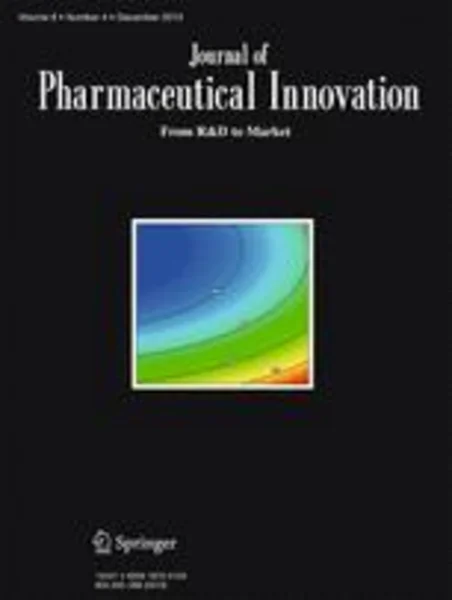-
hybrid controls combining first-principle calculations with empirical modeling for fully automated fluid bed processing
جزئیات بیشتر مقاله- تاریخ ارائه: 1392/07/24
- تاریخ انتشار در تی پی بین: 1392/07/24
- تعداد بازدید: 1088
- تعداد پرسش و پاسخ ها: 0
- شماره تماس دبیرخانه رویداد: -
introductionthe us food and drug administration has encouraged the use of the guidelines put forth by the international conference on harmonization (ich-q8) that allow for operational flexibility within a validated design space. these guidelines make possible fully automated control systems that incorporate information about a process back into the system to adjust process variables to consistently hit product quality targets. traditionally, fluid bed control systems have used either first-principle calculations to control the internal process environment or purely empirical methods that incorporate online process measurements with process models and real-time data management. this study demonstrates the development and implementation of a novel hybrid control system that combines the two traditional approaches.
material and methods
granules containing gabapentin, and hydroxypropyl cellulose were prepared in a high-shear granulator and dried in a fluid bed processing system (diosna minilab). the fluid bed dryer was outfitted with near-infrared (nir), pressure, temperature, and flow sensors which were connected to a distributed control system (dcs) that was used to exercise control of the system. the control system itself consisted of a delta v dcs (emerson process management, equipment and controls, inc., lawrence, pa, usa) that was used to interface the fluid bed dryer with syntq (optimal, bristol, uk). the dried granules were characterized by median particle size and quantity of gabapentin lactam formed (a chemical degradant).
results
control of a fluid bed dryer utilizing both a first-principle control strategy and empirical model-based controls was demonstrated. first-principle control was based on an environmental equivalency factor model to maintain a constant thermodynamic environment. empirical models included a pressure drop across the bed and nir measurement of water content. these systems were combined effectively to consistently dry granules prepared by high-shear wet granulation. utilization of this system greatly reduced the number of experiments necessary to characterize the performance of the system and facilitated control of the process with respect to the two properties of interest, median particle size and chemical stability during drying.
مقالات جدیدترین رویدادها
-
استفاده از تحلیل اهمیت-عملکرد در ارائه الگوی مدیریت خلاقیت سازمانی و ارائه راهکار جهت بهبود
-
بررسی تاثیر ارزش وجوه نقد مازاد بر ساختار سرمایه شرکت های پذیرفته شده در بورس اوراق بهادار تهران
-
بررسی تأثیر سطح افشای ریسک بر قرارداد بدهی شرکت های پذیرفته شده در بورس اوراق بهادار تهران
-
بررسی تأثیر رتبه بندی اعتباری مبتنی بر مدل امتیاز بازار نوظهور بر نقد شوندگی سهام با تأکید بر خصوصی سازی شرکت ها
-
تأثیر آمیخته بازاریابی پوشاک ایرانی بر تصویر ذهنی مشتری پوشاک ایرانی (هاکوپیان)
-
آنالیز رخساره ای و تعیین محیط رسوبی نهشته های پالئوسن زیرین کوه پاترگی در جنوب شرق نهبندان (شرق ایران)
-
ارائه مدلی برای پیش بینی نرخ نفوذ tbm با استفاده از ویژگی های توده سنگ (مطالعه موردی تونل البرز)
-
استفاده از مفاهیم جبر خطی در شیمی تجزیه
-
modelling and simulation of the near-wall velocity of a turbulent ceiling attached plane jet after its impingement with the corner
-
giant magnetostrictive clamping mechanism for heavy-load and precise positioning linear inchworm motors
مقالات جدیدترین ژورنال ها
-
مدیریت و بررسی افسردگی دانش آموزان دختر مقطع متوسطه دوم در دروان کرونا در شهرستان دزفول
-
مدیریت و بررسی خرد سیاسی در اندیشه ی فردوسی در ادب ایران
-
واکاوی و مدیریت توصیفی قلمدان(جاکلیدی)ضریح در موزه آستان قدس رضوی
-
بررسی تاثیر خلاقیت، دانش و انگیزه کارکنان بر پیشنهادات نوآورانه کارکنان ( مورد مطالعه: هتل های 3 و 4 ستاره استان کرمان)
-
بررسی تاثیر کیفیت سیستم های اطلاعاتی بر تصمیم گیری موفق در شرکتهای تولیدی استان اصفهان (مورد مطالعه: مدیران شرکتهای تولیدی استان اصفهان)
-
تاثیر تفکر استراتژیک بر توسعه منابع انسانی با نقش میانجی اثربخشی آموزشی ( مورد مطالعاتی افراگستر گلزار )
-
بررسی جملات مرکّب در دستور زبان فارسی و عربی
-
studying the relationship between transformational leadership and job satisfaction among staff of social security organization in west azerbaijan province, iran
-
the effects of transient radiant flow on pipe in contact with natural convection, for developed laminar flow of fluid with high prandtl number, on enthalpy and entropy generation
-
understanding the negative impacts of rigid instituional framework on community development projects




سوال خود را در مورد این مقاله مطرح نمایید :